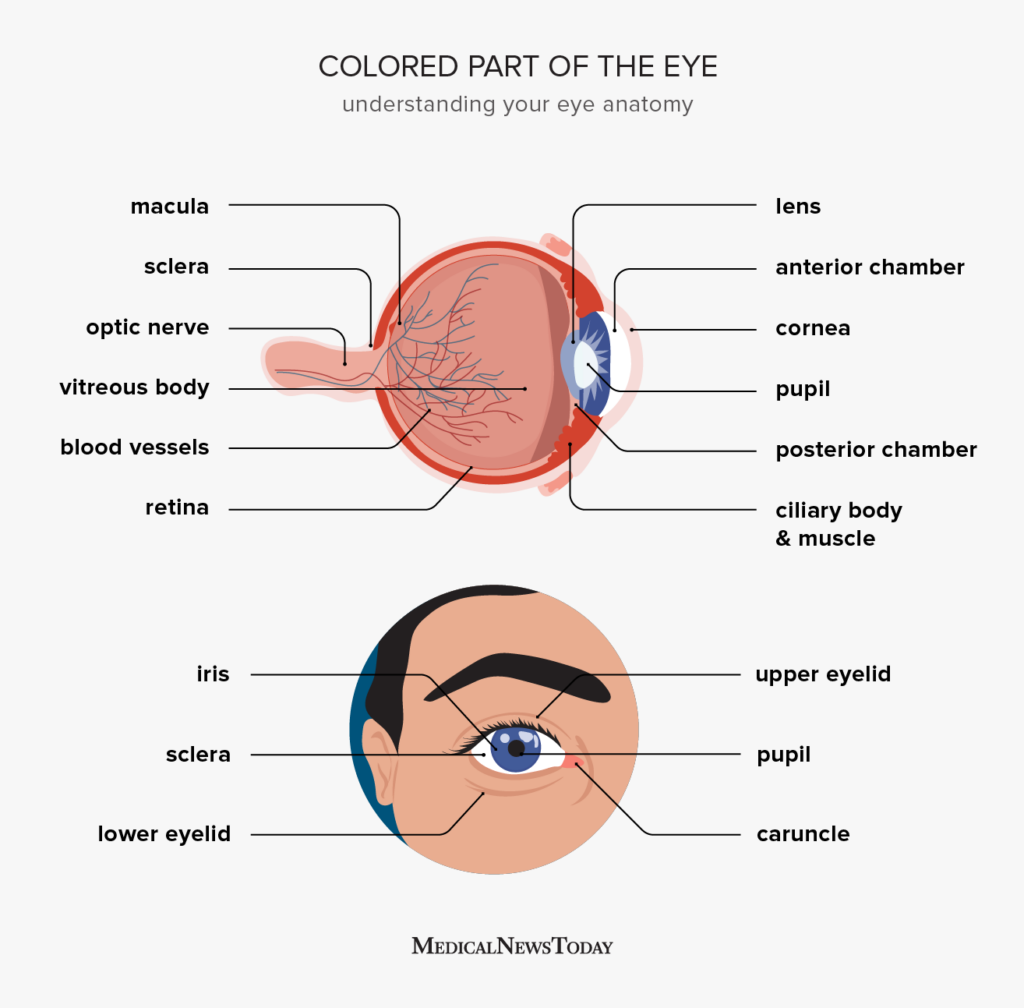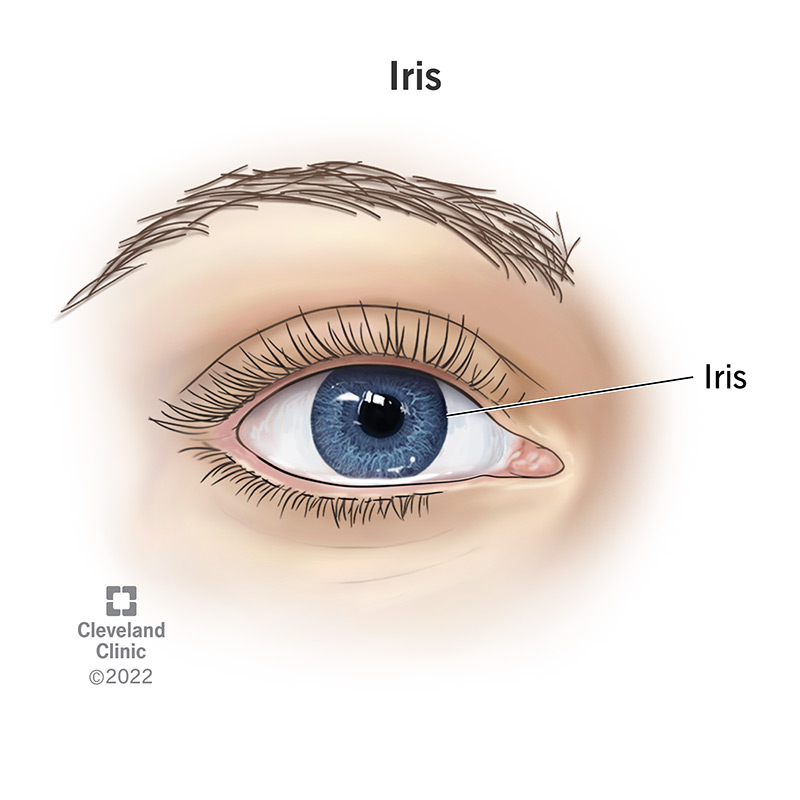Have you ever stopped to marvel at the intricate design of the human eye? It’s a complex organ, responsible for sight and a window into our very souls. But have you ever wondered what that vibrant, colorful ring around the pupil is? You know, the part that comes in so many shades, from piercing blue to warm brown to captivating green?

Image: www.medicalnewstoday.com
That, my friend, is the iris. It’s a fascinating and important part of the eye, and today we’re going to dive deep into what the iris is, how it works, and why it’s so crucial to our ability to see the world around us.
The Iris: A Window to the Soul
The iris is a thin, circular diaphragm situated directly in front of the lens, the focusing element of the eye. It’s the part that gives our eyes their unique color, and its primary function is to control the amount of light that enters the eye. Imagine it like the aperture on a camera, regulating the amount of light passing through to the lens.
But how does it do this? The iris contains two sets of muscles: the dilator pupillae and the sphincter pupillae. These muscles work in tandem to adjust the size of the pupil, the circular opening in the center of the iris.
When we’re in dim light, the dilator pupillae muscles contract, expanding the pupil to allow more light to enter the eye. This allows us to see more clearly in low-light conditions. Conversely, when we’re in bright light, the sphincter pupillae muscles contract, constricting the pupil and reducing the amount of light that enters the eye, protecting the delicate retina from damage.
The Color of Your Eyes: A Genetic Symphony
The color of your eyes is determined by the amount and distribution of a pigment called melanin in the iris. Melanin is the same pigment that gives our skin and hair its color. The more melanin present, the darker the iris. So, blue eyes have relatively low levels of melanin, while brown eyes have high levels.
Interestingly, eye color isn’t simply a single-gene trait. It’s a complex interplay of multiple genes. This is why within families, you might see a spectrum of eye colors, from a parent’s deep brown to a child’s sparkling green.
Beyond Color: Exploring the Iris
The iris is more than just a colorful disc. It’s a complex structure with intricate details that play a vital role in our visual perception. Here’s a closer look:
- Crypts: These are tiny depressions on the surface of the iris, giving it a textured appearance.
- Stroma: This is the connective tissue framework of the iris, containing blood vessels, nerves, and pigment cells.
- Pupillary sphincter muscle: This ring-shaped muscle contracts to constrict the pupil.
- Dilator pupillae muscle: This radial muscle contracts to dilate the pupil.

Image: my.clevelandclinic.org
The Iris: A Sign of Health
The iris is not just an aesthetically pleasing part of the eye; it can also provide clues about our overall health. Medical professionals, especially iridologists, believe that the iris can reveal potential imbalances and weaknesses in different body systems.
For example, certain patterns or discolorations in the iris could be associated with conditions like diabetes, high blood pressure, or digestive issues. However, it’s crucial to note that the scientific evidence for iridology is limited, and these claims require further research and validation.
Iris: A Target for Medical Intervention
Aside from its role in regulating light, the iris also plays a crucial part in certain medical interventions.
One example is **laser iridotomy**, a procedure used to treat acute angle-closure glaucoma, a condition that causes a buildup of pressure in the eye. This procedure involves using a laser to create a small hole in the iris, which helps regulate the flow of fluids within the eye and prevent pressure buildup.
Another example is **iris implants**, which are used to treat certain types of ocular inflammation. These implants are thin, flexible rings that are inserted into the iris to support the eye’s anatomy and reduce inflammation.
What Is Colored Part Of Eye Called
The Iris: A Fascinating Gateway
The iris, a seemingly simple component of the eye, is a captivating example of the intricate workings of our human body. Its role in regulating light, its stunning array of colors, and its potential for revealing aspects of our health make it a remarkable structure worth appreciating. From the tiniest details of its structure to the intricate mechanisms governing its function, the iris is a testament to the wonders of the human body.
So, next time you look in the mirror, take a moment to appreciate the beauty and complexity of your own irises. They are more than just colorful circles; they are vital components of the intricate system that allows us to experience the world around us.






